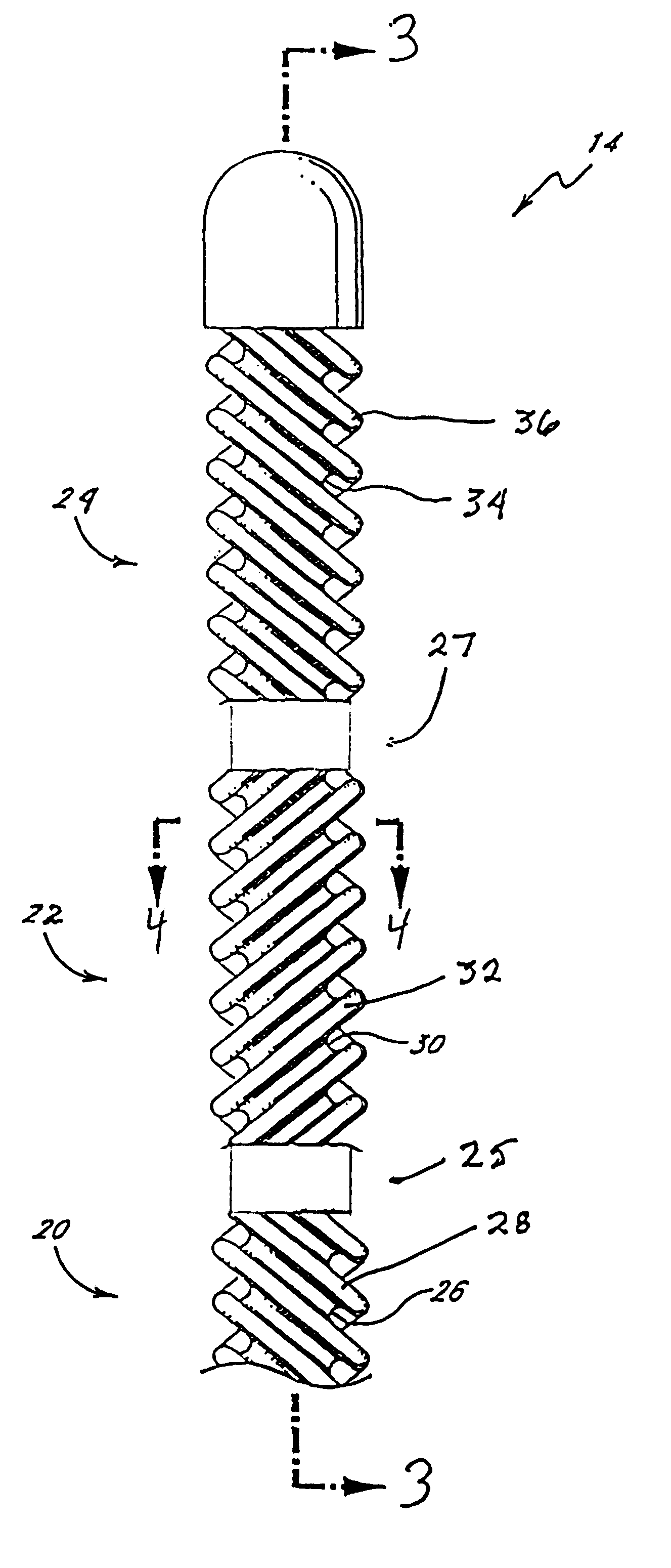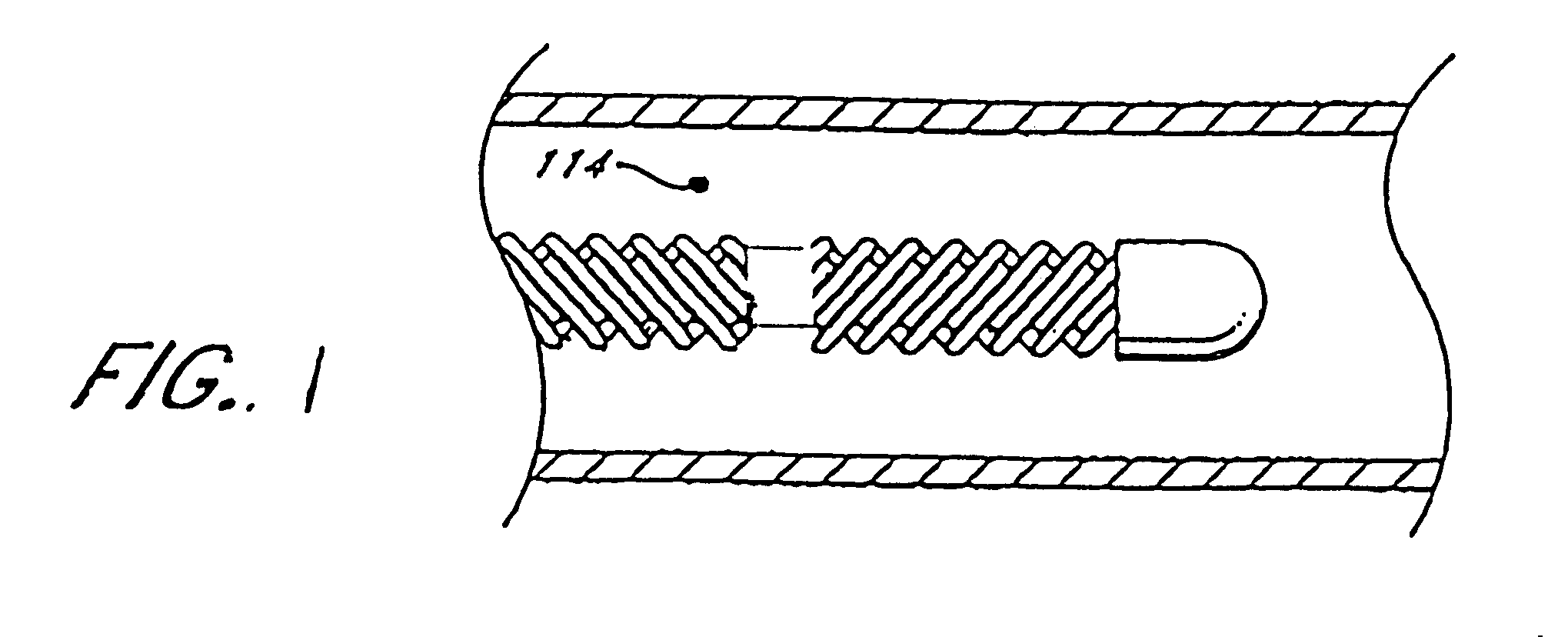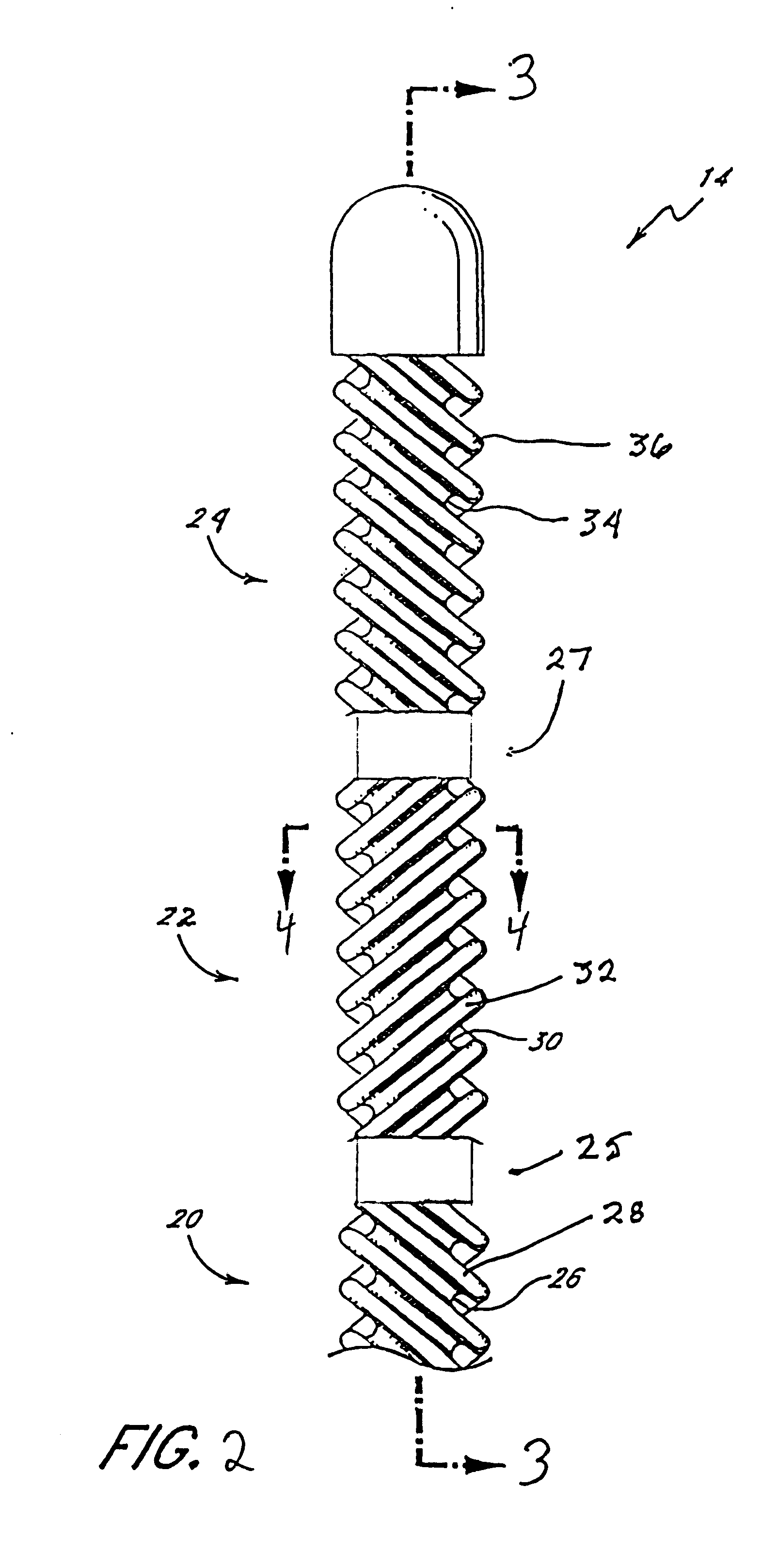Articulation device for selective organ cooling apparatus
- Summary
- Abstract
- Description
- Claims
- Application Information
AI Technical Summary
Problems solved by technology
Method used
Image
Examples
Embodiment Construction
The temperature of a selected organ may be intravascularly regulated by a heat transfer element placed in the organ's feeding artery to absorb or deliver heat to or from the blood flowing into the organ. While the method is described with respect to blood flow into an organ, it is understood that heat transfer within a volume of tissue is analogous. In the latter case, heat transfer is predominantly by conduction.
The heat transfer may cause either a cooling or a heating of the selected organ. A heat transfer element that selectively alters the temperature of an organ should be capable of providing the necessary heat transfer rate to produce the desired cooling or heating effect within the organ to achieve a desired temperature.
The heat transfer element should be small and flexible enough to fit within the feeding artery while still allowing a sufficient blood flow to reach the organ in order to avoid ischeniic organ damage. Feeding arteries, like the carotid artery, branch off the a...
PUM
 Login to View More
Login to View More Abstract
Description
Claims
Application Information
 Login to View More
Login to View More - R&D
- Intellectual Property
- Life Sciences
- Materials
- Tech Scout
- Unparalleled Data Quality
- Higher Quality Content
- 60% Fewer Hallucinations
Browse by: Latest US Patents, China's latest patents, Technical Efficacy Thesaurus, Application Domain, Technology Topic, Popular Technical Reports.
© 2025 PatSnap. All rights reserved.Legal|Privacy policy|Modern Slavery Act Transparency Statement|Sitemap|About US| Contact US: help@patsnap.com



